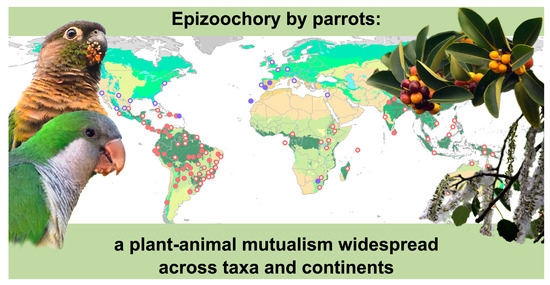Horticultural Terms — Epizoochory: Another Form of Seed Dispersal
In the Summer 2024 edition of this blog, I highlighted the “eliasome,” a fleshy appendage on some seeds that allows ants to transport them into their nests to feed their young. The seeds are then taken to the ants' compost pile where they often germinate in the rich environment. This mutualistic relationship between ants and some seed types is one method of seed dispersal (myremecochory). Another method is epizoochory, n. ep-i-zo-kory [Greek epi upon, zoon animal].
Epizoochory is the inadvertent dispersal of seed by clinging to the exterior of an animal. Seeds grab onto the fur or feet of animals as they forage or move through foliage. Most people who own or have owned animals recognize this form of seeds: they stick to your dog or cat's fur and require tedious effort to remove. As you drop the seeds on the ground you are providing opportunities for seeds to germinate far from the parent plant. The most endearing of these sticky seeds are the tiny ones from forget-me-nots. How many of you have had garden gloves covered with seed after cleaning up these blue beauties? You can't brush them off, wash them off or wait endlessly for them to dry up and fall off. You have to pick them off one by one!
Research has found that furry animals are not the only ones that help seeds disperse without benefiting from the seed's nutrition. Recent research on parrots from all over the world, including those living in urban areas, has found they are really messy eaters. After lunching on all different kinds of fruit, they are often seen with globs of sticky seeds all over their beaks, heads and, sometimes, feet. They are known for their rapid, far-flung flight patterns so they don't wash up right after they eat. Once at rest, they are cleaned in communal grooming sessions or by rubbing their faces on branches.
These sticky seeds develop an adhesive mucus, spines, barbs or hooks all over the seed covering in order to effectively cling to the exterior of animals. Plants with this seed type are commonly herbaceous in the Asteraceae and Apiaceae families. Common examples you might recognize are carrots, anise, celery and (the worst) burdock. If you look up Gallium aparine (Sticky-willy), you will see the seed form that inspired the invention of Velcro!
Many types of seed dispersal are called mutualistic; the mechanism for dispersal, such as vertebrates, invertebrates, etc., benefits from the nutrition of the fruit and then evacuates the seed away from the mother plant. Epizoochory is non-mutualistic; the seed carrier does not benefit from the nutrition of the seed.
References:
Hernandez-Brito D., et al, Epizoochory in Parrots as an Overlooked Yet Widespread Plant-Animal Mutualism Plants (Basel) 2021 Apr 13; 10(4): 760. Doi: 10.3390/plants 10040760. PMD:33924535; PMCID: PMC8070029.
Couvreur, Martine, et al., Epizoochory by Large Herbivores: Merging Data with Models, Basic and Applied Ecology, 12 May 2008, 9(3), 204-212.
Pell, Susan K., and Angell, Bobbi. 2016. A Botanist's Vocabulary, 1st ed., Timber Press, Inc., New York, NY.
